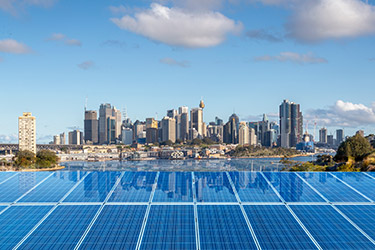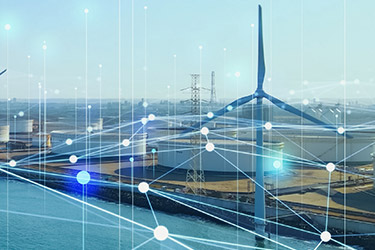Energy industry jargon for c-suites: the must-have guide
Paul Moore, Published: August 16, 2018 - Updated: February 25, 2020 (13 min read)
Cutting through the energy industry hyperbole is more important now than ever. Australia’s electricity market is undergoing political scrutiny as the government’s National Energy Guarantee (NEG) is debated.
Meanwhile power price variability is having a bigger impact on business margins month-to-month. Energy is now factoring into the CFOs' books in a big way.
The good news is technological advancements in storage and generation methods are transforming the way the grid and businesses manage energy. But as businesses look to take advantage of such energy macro trends, they need to know what’s on the table.
We cut through the political rhetoric and technical jargon to define 14 must-know energy industry terms that will allow you to make better decisions to support the business’ current and future energy needs and costs.
Scan through this list or keep it on hand to better understand the sector going forward:
Australia’s Electricity Markets
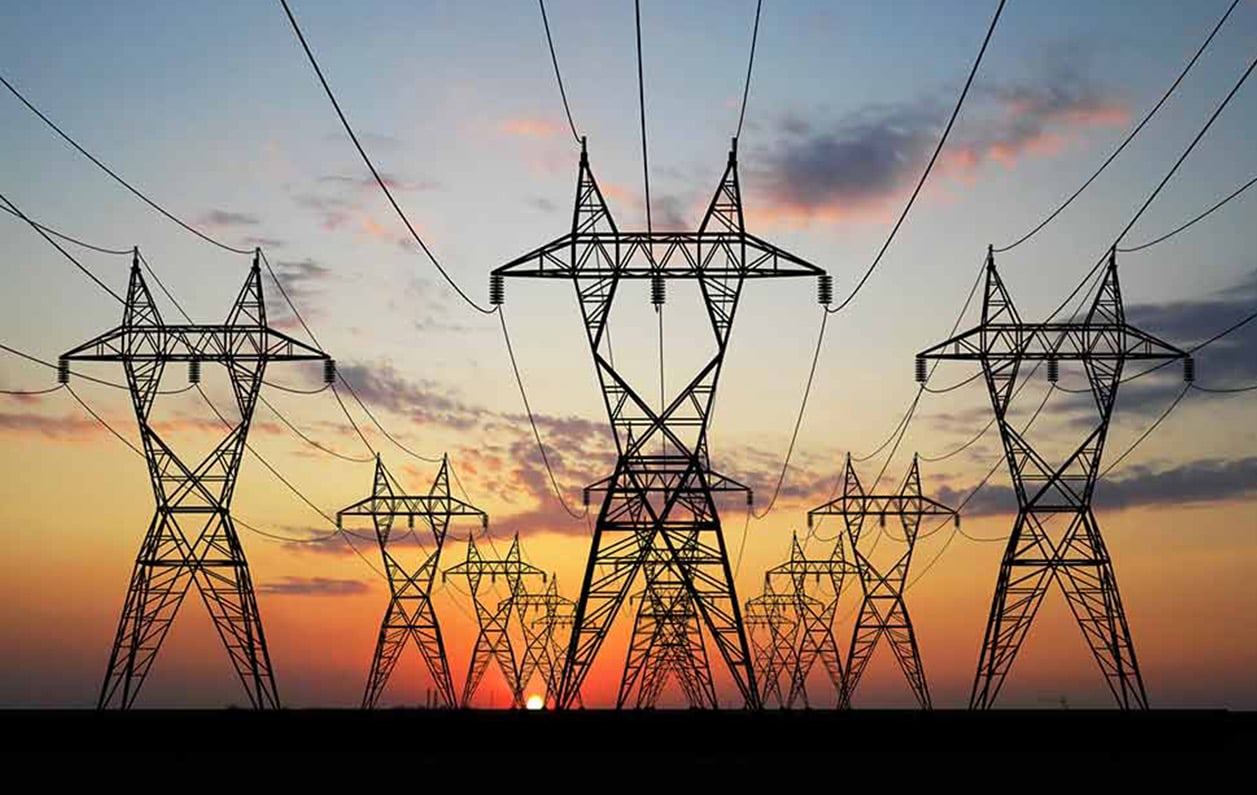
Australia’s electricity market – the networks of poles and wires that bring energy from transmission to the home – is made up of three separate markets:
- National Energy Market (NEM): Queensland, New South Wales, Victoria, Tasmania and South Australia
- Wholesale Electricity Market (WEM): Western Australia
- The Northern Territory has its own unnamed market
Insight: These markets are governed and run by the Australian Energy Market Operator (AEMO), while the rules for the market are set by the Australian Energy Regulator (AER).
Running short on time? Watch the energy jargon recap video:
Spot market
The method that energy is generated, scheduled, transported and priced.
Since energy must be used the moment it is created, the spot market relies on sophisticated IT systems to monitor energy production, aggregate supply and demand data and schedule transfer in 5 minute intervals to meet demand in real-time. Every 30 minutes the energy spot price is assigned based on these conditions. AEMO manages the spot market.
Insight: The NEG plans to do away with short-term spot prices and replace them with via long-term contracts in a bid to lower prices.
Distributed generation & centralised generation
Centralised generation: the term for energy that is distributed in one direction, and from one central source such as coal, gas or hydro and through the transmission network. The model has not changed since electricity first emerged in the 1880s along with the first lightbulb… until now.
Distribution generation: the term used for energy that has been generated from multiple sources (often renewables) close to the point of use, and through the distribution network; versus centralised generation from power stations via the transmission network.
Insight: Globally, centralised distribution is being disrupted by distributed generation methods such as renewable technologies.
Duck curve
Coined the ‘California duck curve’, this term refers to the phenomenon of oversupply of solar energy in the day, and its steep decline in the evening, when demand for electricity is highest.
The network struggles to cope with the ‘solar spill’ of energy flooding the grid, which coincidentally ends up wasted because it’s not used when it's available.
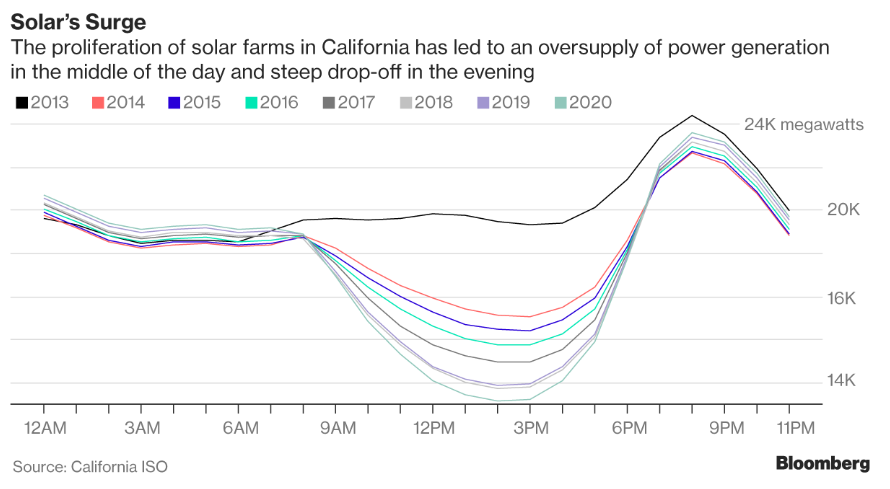
The duck shaped curve shows where grid demand drops due to solar supply, but must ramp up supply again in the evening.
Insight: The advancement of battery storage is levelling out the duck curve.
Dispatchable vs non-dispatchable power
The two types of power supply and what they mean for you:
Dispatchable power = assumed the supply can ‘dispatch’ power at any time to meet any demand. E.g. current coal technology.
Non-dispatchable power = intermittent power supply. E.g. Solar panels without storage
Insight: Better, lower cost battery technology is enabling non-dispatchable energy like solar to act more like dispatchable supply.
Energy management systems (EMS)
A term that has means different things for different markets. It’s widely used in consumer markets for home systems that help optimise solar.
For our purposes, EMSs are the centralised, smart control systems that enable businesses and utilities to move, generate, store, and/or analyse electricity more efficiently, affordably and sustainably.
Insight: A well-designed EMS should allow the consumer to mix and match best in class energy technologies such as batteries, solar inverters, or grid (protection) relays.
‘Behind-the-meter’
An energy generation unit or system that is located within an owner’s premises, and produces its own electricity in addition to drawing from the grid.
Insight: The prevalence of industrial scale, behind-the-meter solar is increasing dramatically with capital costs predicted to drop by 35-50 percent by 2030.
Distributed energy resources (DER)
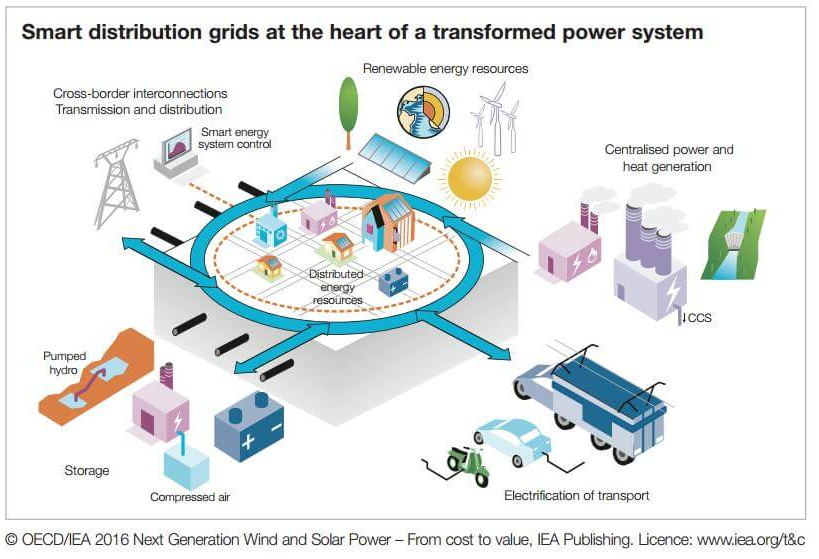
DER systems provide dispatchable energy that is close to the point-of-use via any combination of: diesel generation, storage facilities, and renewable generation methods such as hydro, rooftop solar, wind turbines, and biofuels.
DERs must be connected to a distribution network, and can:
- live on a customer’s premises (so are behind-the-meter)
- belong to a utility to power small communities
- include smart control systems, inverters, smart metering, sub-metering and/or data analytics services
- have both generation and storage units
Insight: According to the Australian Government Renewable Energy Agency, “over 40 per cent of energy customers will use DER by 2027. By 2050, that figure will grow to more than 60 per cent”.
Microgrid
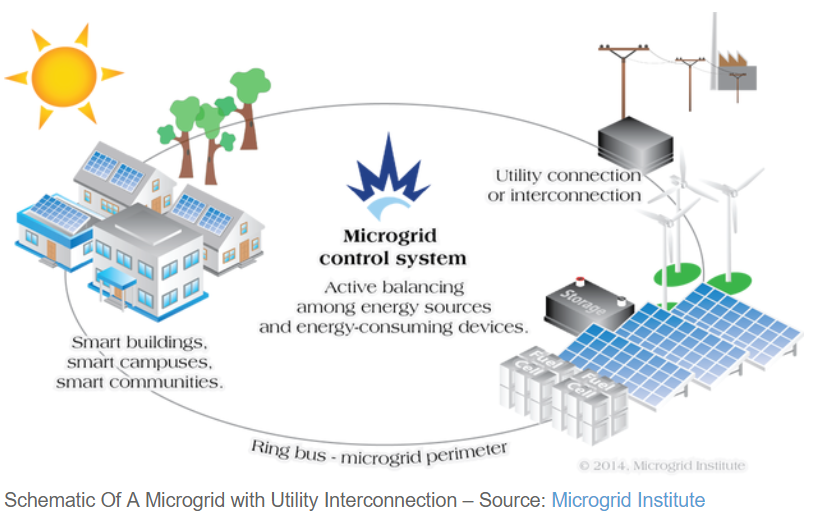
Microgrids are a special type of DER; they can connect and disconnect from the grid to enable it to operate in both grid-connected or island-mode – not an easy engineering feat!
This allows towns or private sites to isolate themselves against grid blackouts if necessary, but still exchange energy with the grid if needed.
These terms are often confused, so be sure to check that the microgrid is actually a microgrid, not just a DER.
Insight: There are many different microgrids in operation and trial across Australia and the world, from Australia’s first mini grid trial in suburban Melbourne, to microgrids servicing remote communities in WA.
Smart Grid
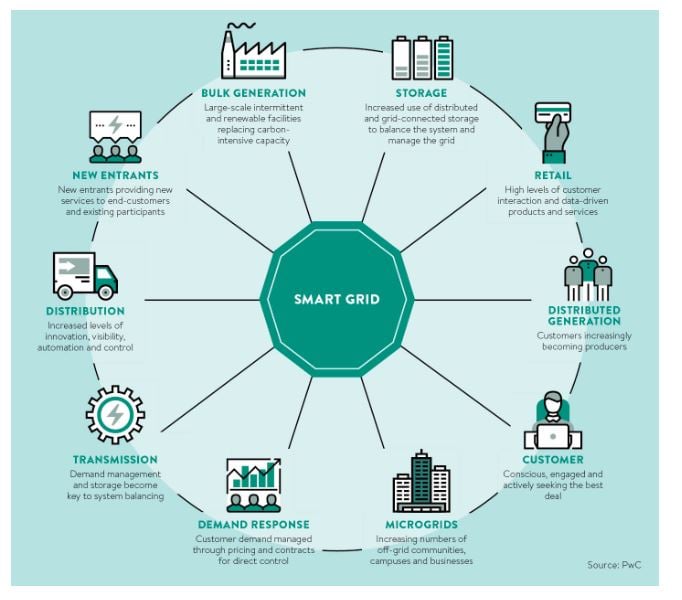
While microgrids are geographically isolated energy generation systems, ‘smart grids’ refers to how the entire electricity grid is managed.
So, a smart grid could manage multiple microgrids. They are the modernised electricity grids that use IT and communications technologies to improve the reliability, cost, and efficiency of electricity distribution.
Insight: Industry 4.0 technologies like 5G are enabling ‘smarter smart grids’ that will contribute to smart cities.
Smart meter vs sub meter
These are very different solutions.
Smart meters are devices that digitally measure your facility’s power consumption every 30 minutes, rather than waiting for manual meter inspections. They also allow utilities to remotely switch on/off electricity and report on power quality in real-time.
Sub-meters are devices that can measure energy usage of separate departments, tenants or sub-systems on a site.
e.g. conveyor lines, pumps, refrigeration, heating and cooling systems, fans, lifts, lighting, and plug loads.
This gives you a clear and accurate idea of how and when energy is being consumed.
Insight: IBM reports that modern smart meters combined with IoT will reduce overall energy consumption for customers.
Demand response
Demand response is the opportunity for customers to reduce or shift their energy use based on time-based incentives or tariffs set by utilities. Utilities and grid operators use demand response to help balance the grid load.
Insight: Smart grids and other digitisation technologies are improving demand response systems.
Peak shaving (lopping)
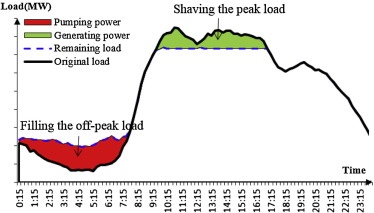
Peak shaving is any method to reduce energy usage during peak demand periods in order to minimise peak demand charges.
Insight: Peak shaving doesn’t need to be complex; it could be as simple as switching off lights, closing a cool room door or using smart energy management systems to automatically control processes to run with solar availability.
Industry 4.0 in energy
We’ve included ‘Industry 4.0’ because the term is thrown around a lot, but many are still unclear on its exact meaning.
What is Industry 4.0?
Industry 4.0 or the ‘Fourth Industrial Revolution’ is the umbrella term for the advancement in automation and data technologies that will transform the way ‘we do things’ across society. With data and connectivity at its core, industry 4.0 is about the merging of physical and digital worlds to gain analysed, actionable data insights.
What does industry 4.0 mean for the energy industry?
For the energy industry, industry 4.0 refers to any new technologies and data capabilities that control, optimise and improve the way energy is managed.
Many of the energy solutions mentioned in this article leverage industry 4.0 technologies: e.g. smart metering, advanced data analytics, smart control systems, IoT device monitoring.
From definitions to action: navigating the energy industry disruption
As the NEM debate wages on, business must continue to be profitable. For larger power users, it's more important than ever to spend some time understanding the sector’s newer technologies, trends and misconceptions.
Understanding this will enable you to cut through the hyperbole and make the right investment decisions around securing the businesses' current and future energy needs. As we’ve seen in recent times, not doing so opens the business up to billions of dollars in downtime risk.
Still exploring your energy needs and options? Our free guide to managing industrial energy costs explores the energy market and current technologies that are giving heavy energy users saving opportunities. The guide covers: What energy challenges are big businesses facing?, Energy Management & Measurement, Making financial savings through improved energy efficiency, Distributed Energy Resources and Industry 4.0 Enhancements.
Download your free copy today: The graphical guide to managing industrial energy costs [with renewables and Industry 4.0]
